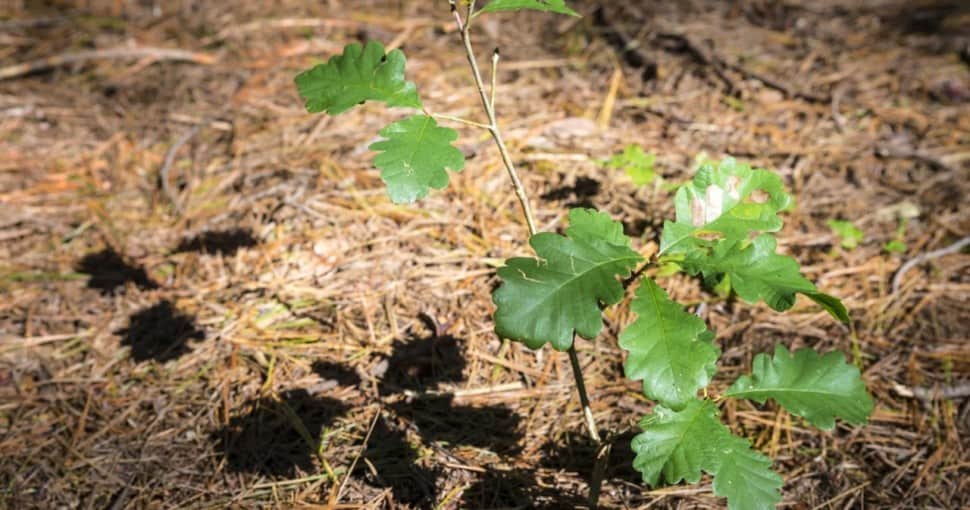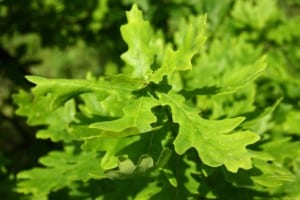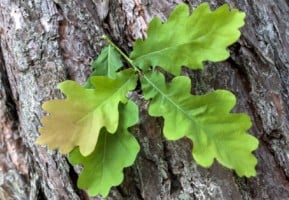Located in the heart of the gorgeous and vast American Southwest, New Mexico is a large and diverse state. Even though it has numerous kinds of geographic landscapes, deserts and Rocky Mountains lay supreme. These mountain ranges are home to a stunning variety of flora and fauna, including the ever-impressive oak tree. Let’s learn all about them today!
Contents
New Mexico boasts a dynamic terrain with a varying climate that has allowed a truly distinct ecosystem to develop in the state. With an area of 315,194 km², the size, landscape, and weather conditions of New Mexico make it one of the most biologically diverse states.
Being America’s fifth-largest state, New Mexico has six different life zones, including alpine tundra, woodlands, coniferous forests, riparian areas, and shrub lands. When we look into the plant wildlife in New Mexico, drought-resistant trees that can handle the harsh desert climates are most common. Among these are the oak trees that stand tall and proud in the mountain ranges of New Mexico.
There are different types of oak trees found in New Mexico, and they serve well as shade trees. Moreover, these trees offer some color to those chilly fall months as the leaves turn orange and bright red. Oak trees may be slow-growing, but they are astonishingly long-lived and cold-tolerant, making them ideal for growing in New Mexico. These trees also adapt well to the state’s soil conditions. They produce acorns that are considered a highly valued food source for the wildlife residing in these forests.
New Mexico has a mild and arid continental climate, which is characterized by light precipitation and plenty of sunshine. The state also receives low levels of humidity and has an average annual temperature of mid-50*F, allowing different types of oak trees to thrive in it. Let’s take a closer look at the oak trees found in New Mexico.
1. Chinkapin Oak (quercus muehlenbergii)
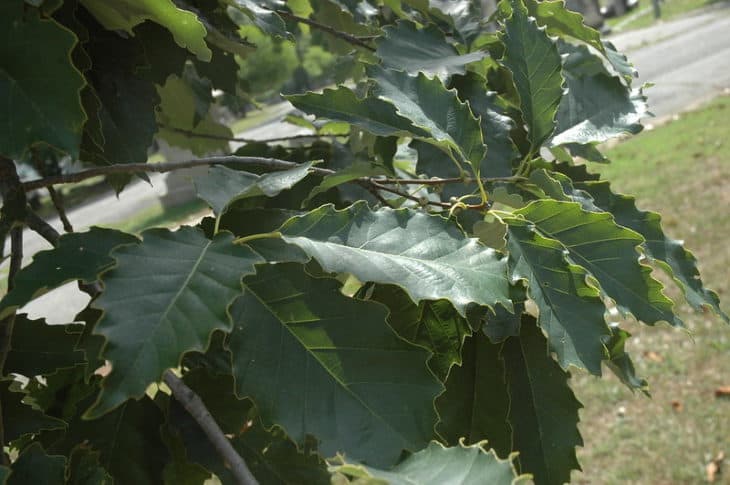
Chinkapin oak trees are only found in the high desert areas of southeast New Mexico. They are tall trees, crossing over 100 feet in height, and have open branching. Their barks are scaly and brownish-gray in color. Chinkapin oak trees have long, oval-shaped leaves found in glossy green-blue color. You will also notice deep-toothed edges on the leaves. These trees produce tiny, rounded acorns in early fall that are valued for their sweet taste.
2. Gambel Oak (quercus gambelii)
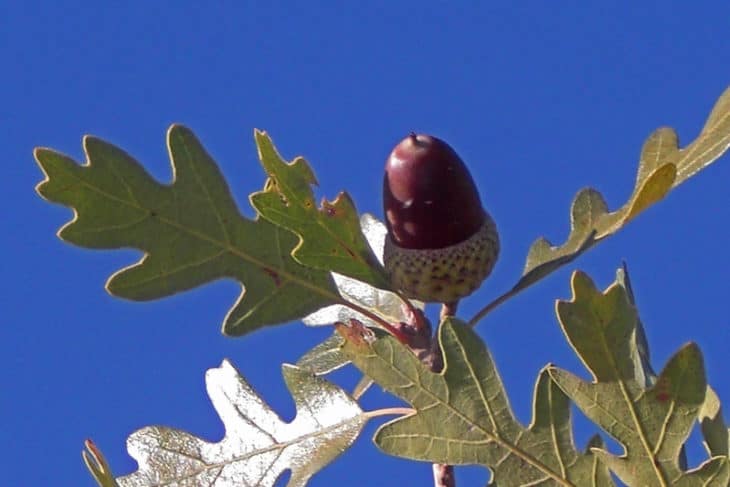
Next, we have the Gambel oak, which is a small, shrub-like tree growing along the foothills and slopes of the mountains. These trees usually just reach heights of 40 to 60 feet but can be found growing taller in high precipitation areas. You may even hear the locals call it scrub oak. These trees grow in dense thickets and form blue-green, lobed foliage. They have a rough, brown-gray bark and produce acorns in late summer.
Besides New Mexico, the Gambel oak is also found in Utah, Arizona and Colorado.
3. Bur Oak (quercus macrocarpa)
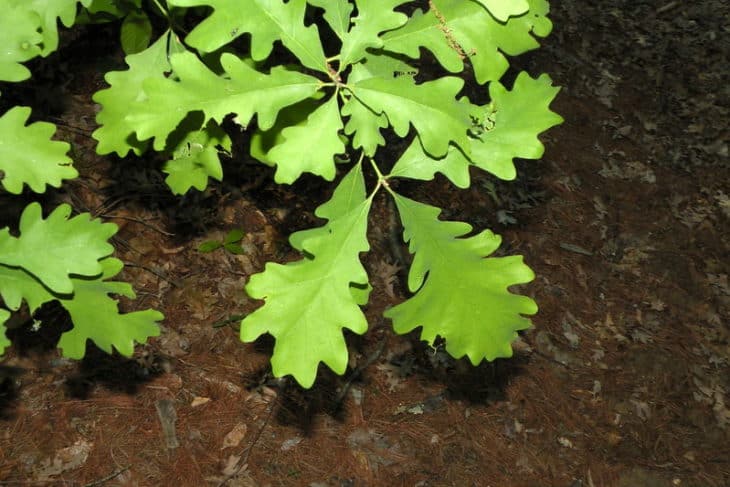
The Bur oak is one of the rarest oak trees in New Mexico, only growing in scattered numbers on the state’s eastern portion. These exceptionally tall trees reach heights of 105 feet on average, and their trunks are around 10 feet wide. Bur oak trees have a broad crown with deeply lobed leaves that don’t show strong fall colors. They produce the largest acorns of any oak tree.
4. Gray Oak (quercus grisea)
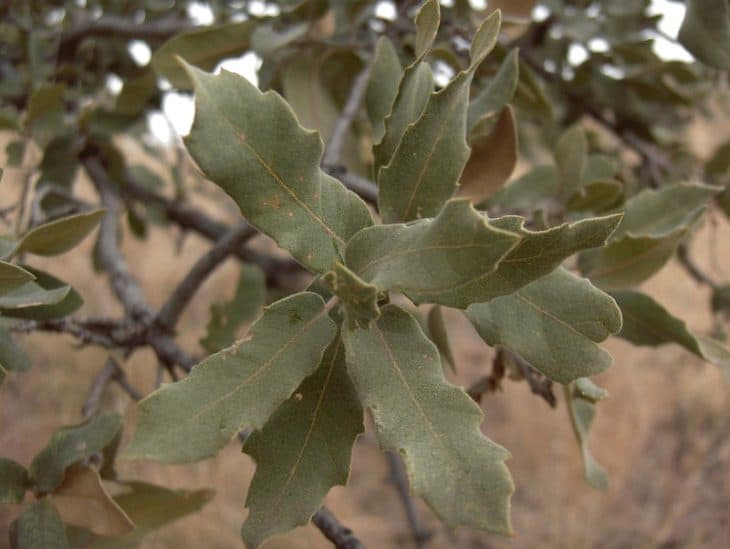
Gray oak trees are some of the most abundant trees in New Mexico, found in the moist canyon areas of the state. They either grow as large shrubs or small trees, depending on the soil and weather conditions they receive. Gray oak trees are named for the grayish cast of their foliage, forming a small and uniform silhouette. They have a rounded crown of alternate, leathery leaves with coarse teeth.
5. Shrub Live Oak (quercus turbinella)
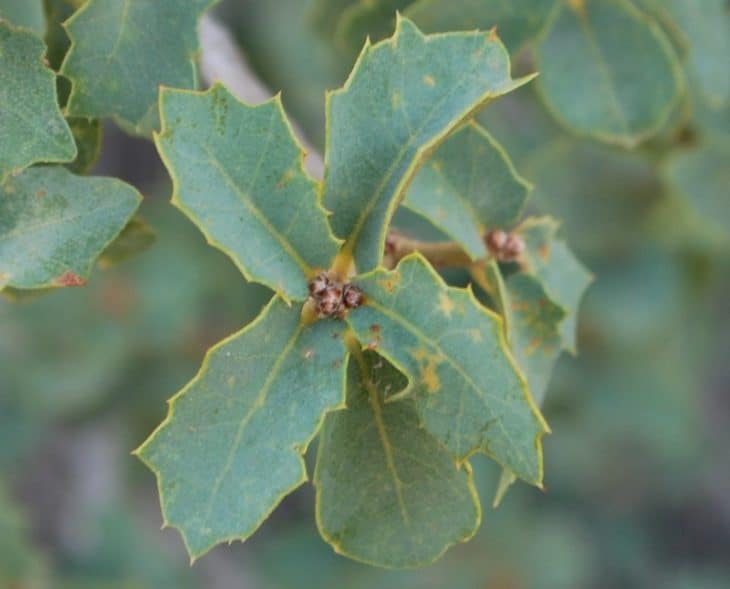
Lastly, we have the Shrub Live oak, which is found growing along the Rio Grande river valley as well as in some parts of Utah and Arizona. These small, shrubby trees grow up to heights of 15 feet at maximum. They have thick, gray-green leaves with spiny toothed edges along them. The leaves are waxy in textures on the upper surface and hairy on the lower surface, giving the Shrub Live oak a rather peculiar look. Their acorns are around 2 cm long.

